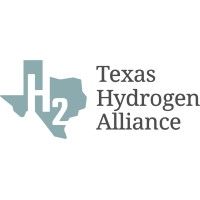CFD Optimizing electrolyzer performance with MICROGRID® Expanded Metals
)
Electrolyzers are advanced electrochemical devices that require precise management of liquids and gases transport to efficiently function, particularly at high hydrogen production rates. To ensure efficient transport of reactants into the cell, and products out, a variety of materials can be employed to enhance overall performance. Expanded metals are one such open area material that is advantaged in that it is produced in a highly scalable and economic process involving a simultaneous slit and stretch process that yields up to 90% more finished product output than raw material input. Once expanded, these foils can be stacked with specific configurations to allow for optimized mass transport based on the cell frame and stack pressure configuration.
Computational fluid dynamics analysis: To facilitate product selection and showcase the functionality of PPG Microgrid expanded titanium as a flow field component, we have employed computational fluid dynamics (CFD) to analyze its integration into a porous transport layer (PTL) assembly. For this work a bi-layer assembly of PPG Microgrid expanded titanium product, product code: 10Ti12-125, was used with the long way of diamond opening oriented 90º from each other. This is the minimum number of Microgrid expanded metal materials necessary for water distribution, as the two-layer, 90º orientation allows for flow in all directions. Hydrodynamic properties of water flowing across a 2-layer Microgrid assembly
were computationally determined with the imposed boundary conditions. The output from this analysis is show in Figure 2, where you can see the inlet and outlet water channels at the bottom and top of the figure, respectively. This computational analysis confirms that the 2-layer Microgrid expanded metal flow field efficiently distributes water across the cell as there is an even horizontal pressure drop.
MICROGRID®
Expanded Metals
Optimizing electrolyzer performance with MICROGRID® Expanded Metals
Technology overview and computer-aided product selection
Figure 1. Microgrid terminology
Figure 2. Pressure drop distribution across a Bi-layer Microgrid assembly.
Advanced designs capabilities: While a 2-layer Microgrid assembly is the minimum amount of material needed for 3-D flow, adding additional layers can further impact water flow. To demonstrate the effect of a more complex stack, Figure 3 describes the velocity magnitude of water flowing across 2 and 4 layers of Microgrid expanded titanium at a 14psi pressure drop. All scenarios display even horizontal water distribution, but by comparing the flow rate for Figure 3A with Figure 3B, an increased mass flow is observed when the number of Microgrid layers raises from 2 to 4. Figure 3C and Figure 3D further modify the assembly by introducing a porosity gradient, where the top expanded material layer has a higher open area. Comparing the velocity magnitude between the smaller (Figure 3C) and larger (Figure 3D) open area Microgrid reveals a higher predicted velocity for the Microgrid layer with a larger open area. This could be advantageous in expeditated gas removal from the stack, while allowing for a few layers of smaller open area material to provide mechanical support to other PTL or membrane materials.
To evaluate your specific expanded metal requirements and needs, please contact PPG at DBAdams@ppg.com for an introductory conversation. We look forward to collaborating with you to find the ideal solutions for your applications.



)
)
)
)
)
)
)
)


)
)
)
)
)
)
)
)
)
)
)

)
)
)
)
)
)
)
)
)

)
)
)
)
)
)
)

)
)
)
)
)

)
)

)
)
)
)
)
)
)
)

)
)
)
)
)
)
)

)
)

)
)
)
)
)
)
)
)


)
)

